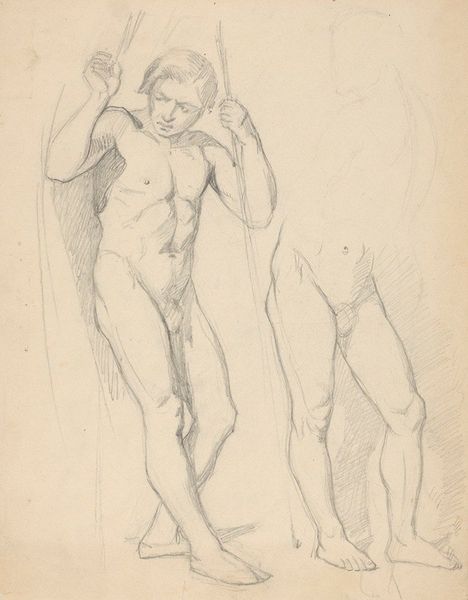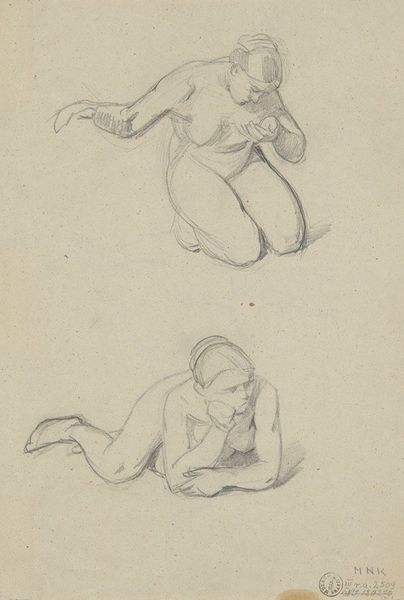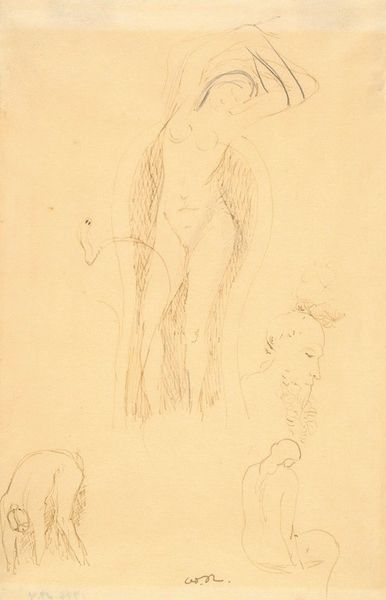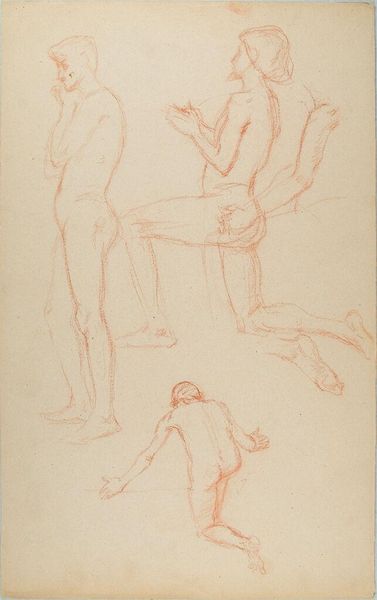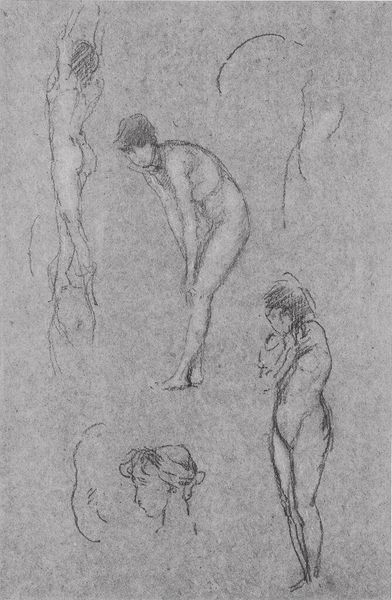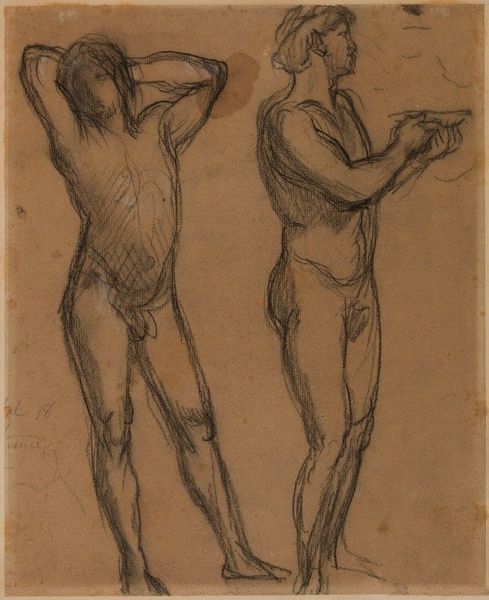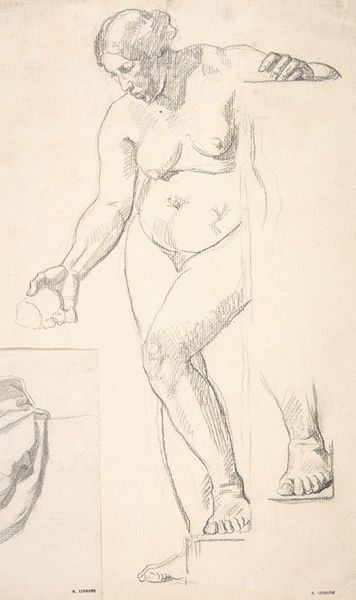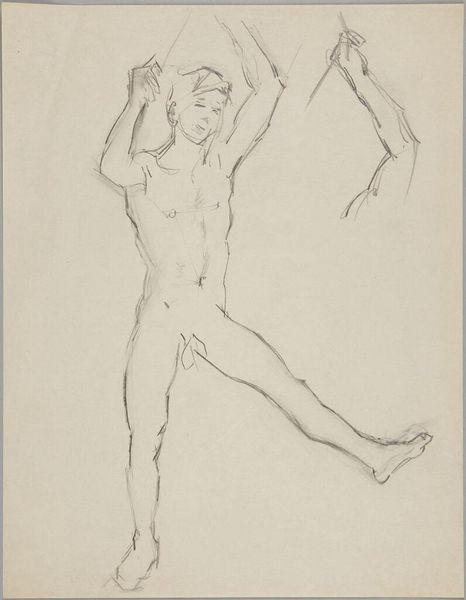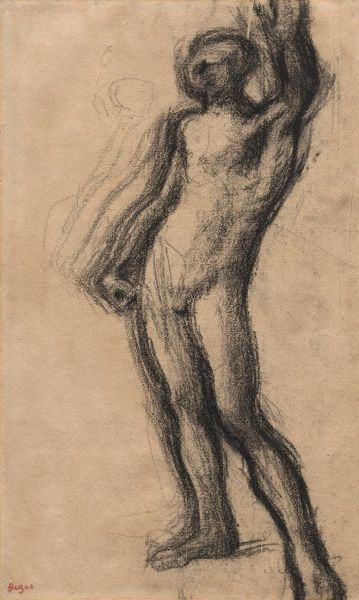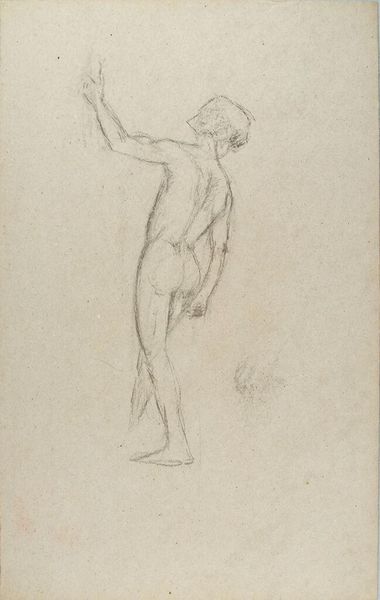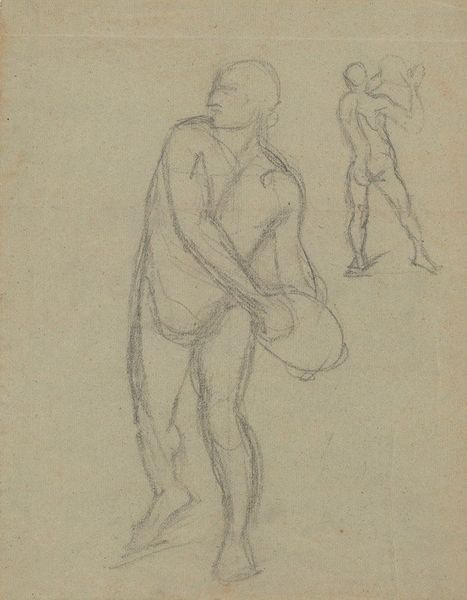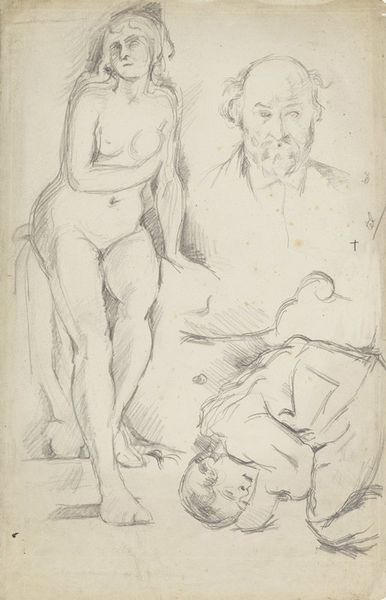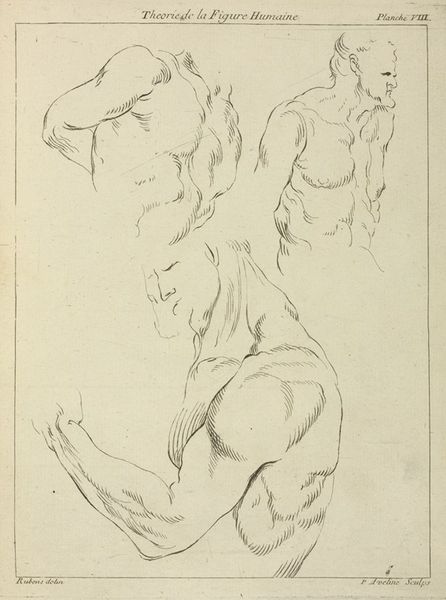
drawing, pencil
#
portrait
#
drawing
#
figuration
#
pencil
#
academic-art
Copyright: Public Domain: Artvee
Editor: This is *Etude d’enfants* – or Study of Children – a pencil drawing by Pierre Puvis de Chavannes, made around 1867 to 1869. It feels almost dreamlike, ethereal. It has the sketch-like feel of DaVinci and yet still has a classical feeling that seems reminiscent of Raphael and Ingres. How do you respond to it? Curator: Oh, it whispers of something half-remembered, doesn’t it? A flicker from childhood… I’m particularly drawn to how de Chavannes captured these almost fleeting poses, like glimpses of cherubs just beyond our grasp. And look at the density in some areas and sparseness in others, using line and shading masterfully. Where do you think he might have been going with it? Editor: I hadn't thought of cherubs – they're studies, right? Possibly for a larger history painting or allegory? Curator: Indeed, studies often served as springboards for grander compositions. I like to imagine de Chavannes observing children, captivated by their unconscious grace, attempting to distill the very essence of innocence onto paper. You see the weight that is rendered in the children’s body; one standing with the hands crossed is leaning on its foot. And in the figure on the lower right there is weight with the line following gravity in the figure pulling down the textile behind it. It reminds of Greek antiquity. He almost surely didn't capture this immediately from thin air, but must have studied this topic at length. Are you also getting some antiquity references, from seeing all the movement depicted in each figure? Editor: Definitely! All this motion creates a stillness on the overall image. All this movement creates harmony with stillness! Do you think there’s a reason they are nude? Curator: Well, drawing the nude human form allows a particular insight into anatomical precision, revealing muscles, form, balance – but there is no shame depicted, simply form and figures, so this study reveals how an exercise in form could be even more illuminating than fully realized, “finished” works! I love that! It makes me wonder, where would he take these figures? It inspires me. Editor: Yes! It’s interesting how a study can become something complete and unique in its own right. Curator: Absolutely. Thank you!
Comments
No comments
Be the first to comment and join the conversation on the ultimate creative platform.
